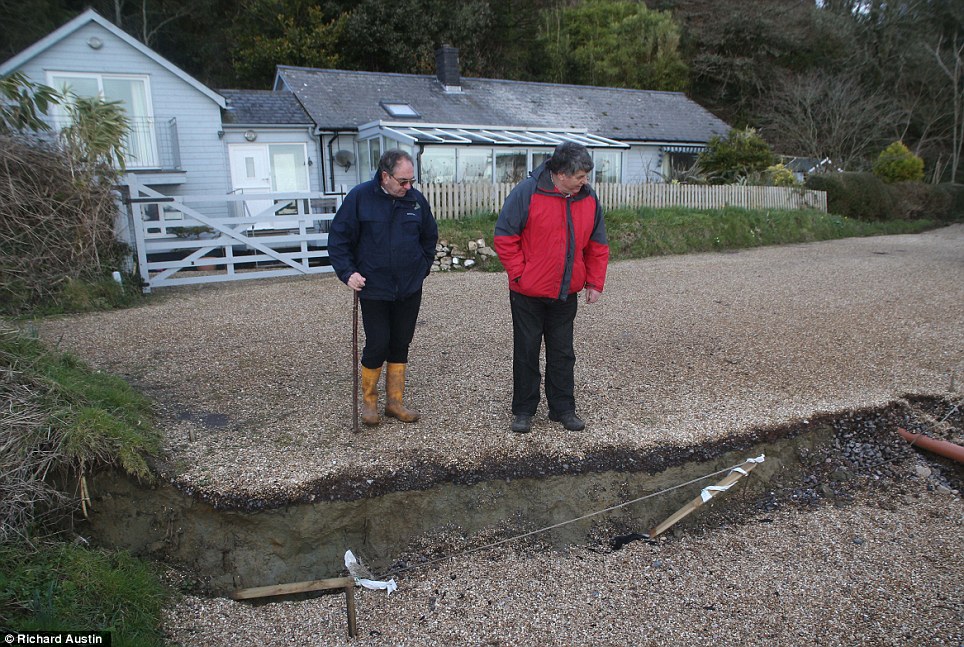
* Experts say problems have been caused by the months of torrential rain and storms that hit Britain
A million-pound holiday home could be under threat after huge cracks and steps appeared up to a quarter of a mile inland on the Jurassic Coast after months of appalling weather.
The expensive bungalow west of Lyme Regis in Dorset is surrounded by hundreds of acres of unstable land slumping slowly seawards because billions of tons of rock and mud are on the move.
A three-foot step has been cleaved across the road from the property - even though it is some distance from the sea - as seven miles of the beautiful South West Coast Path has been closed around it.
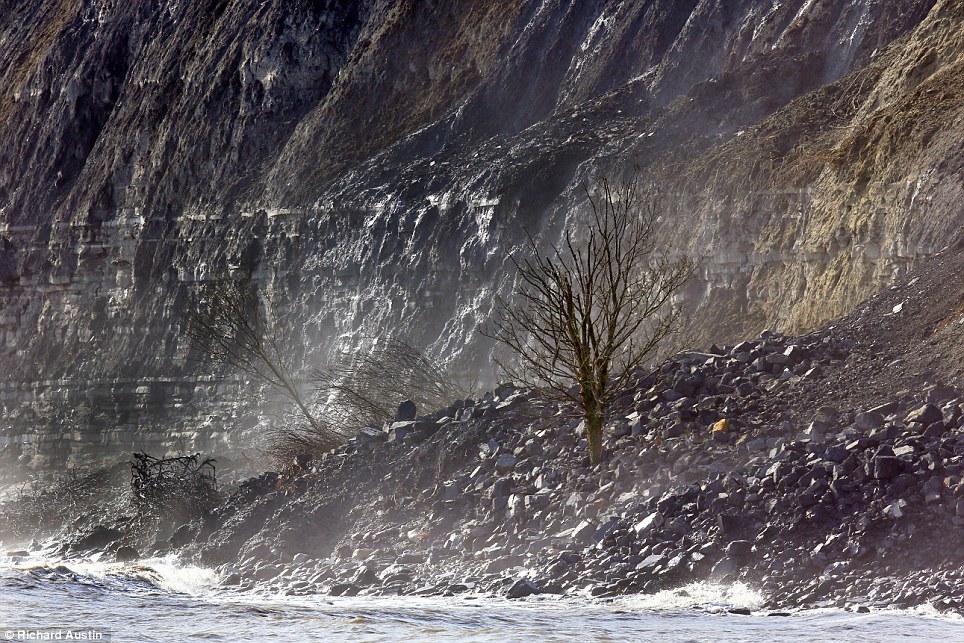
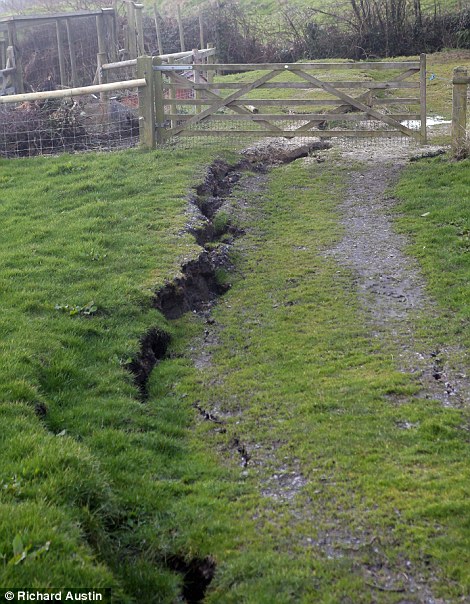
The clue is in the name - this is a dynamic landscape which used to be part of the seabed during pre-Ice Age times when tidal levels were far higher than they are now.
Ancient sea-cliffs along this part of the coast can be seen perched over 350 feet above today's high water mark - the landscape beneath them is merely reacting to gravity now that heavy rains have lubricated subterranean seams.
Dorset County council experts are keeping 'a close eye' on the situation but admit there is little that anyone can do to save the seaward acres on the Dorset-Devon county border.
'A lot of rain means a lot of landslide activity,' said Dorset County Council geologist Richard Edmond, an expert on the Jurassic Coast.
'The Ware area is part of the undercliff - and the whole length of that coast is a series of landslides.
'What's happening there now is all linked to what we saw last year when the beach huts on Monmouth Beach were destroyed,' he explained.
'We are keeping a very close eye on it - but this is a landslide not a rockfall,' Mr Edmonds went on.
'People along this coast are used to seeing rockfalls which drop dramatically into the sea - but a landslide like this happens slowly.
'And there is usually a delay between the time when the rains stop and the activity occurs - this could become more active in April, May or even June.
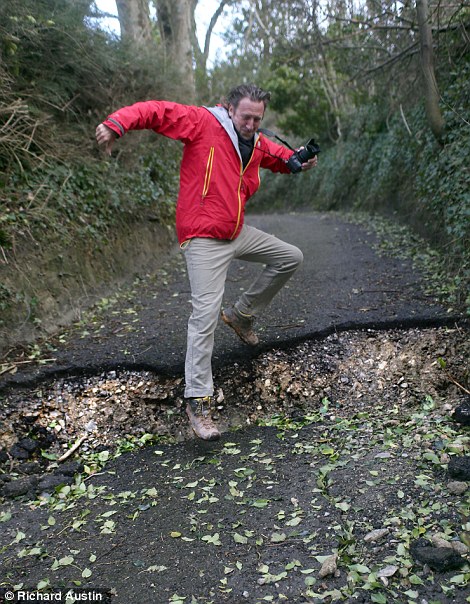
He said: 'I walk here most days and I can tell you the house has sunk over two feet in the past fortnight.'
A large crack has opened across the gravel drive just feet from the home's front door while just feet away a telegraph pole, dislodged by earth movement, is resting at an alarming angle.
Seawards of the home massive cracks in the ground had opened up across paddocks, and areas of paddock and field had dropped to form large steps in the landscape.
The most damaging of these divides an access road where an abrupt, vertical, three-foot drop now cleaves the lane in two.
Cracks and fissures large and small had been opening up across many acres.
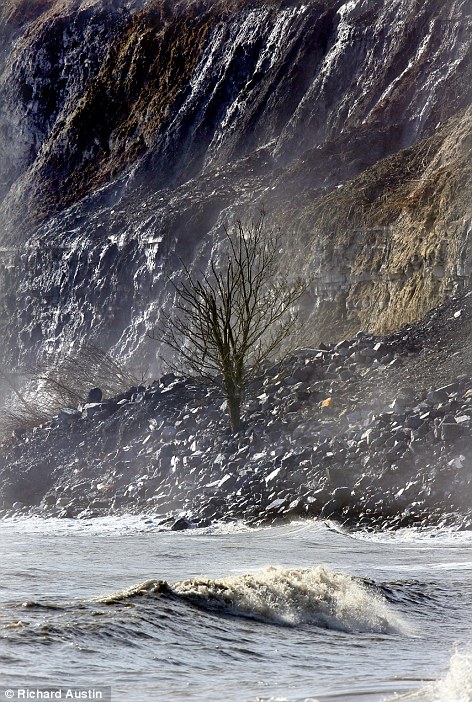
Exactly the same scenario could have been witnessed on the altogether busier and more populated eastern side of Lyme Regis if local authorities not decided to spend £24 million on large scale engineering works which are presently underway to bolster the seaward landscape there.
The scheme is the fourth stage of a ground stabilisation programme staged in a bid to halt the 'landslide zone' on which Lyme is built.
The current phase is aimed at protecting around 240 homes and a substantial section of the main Charmouth Road.
Even that massive expenditure, however, is no guarantee when it comes to the long-term future of Lyme Regis: 'It's been designed to protect the town for 60 years,' said Mr Edmond.
'But no one can say what will happen after that. This is a dynamic coastline.'
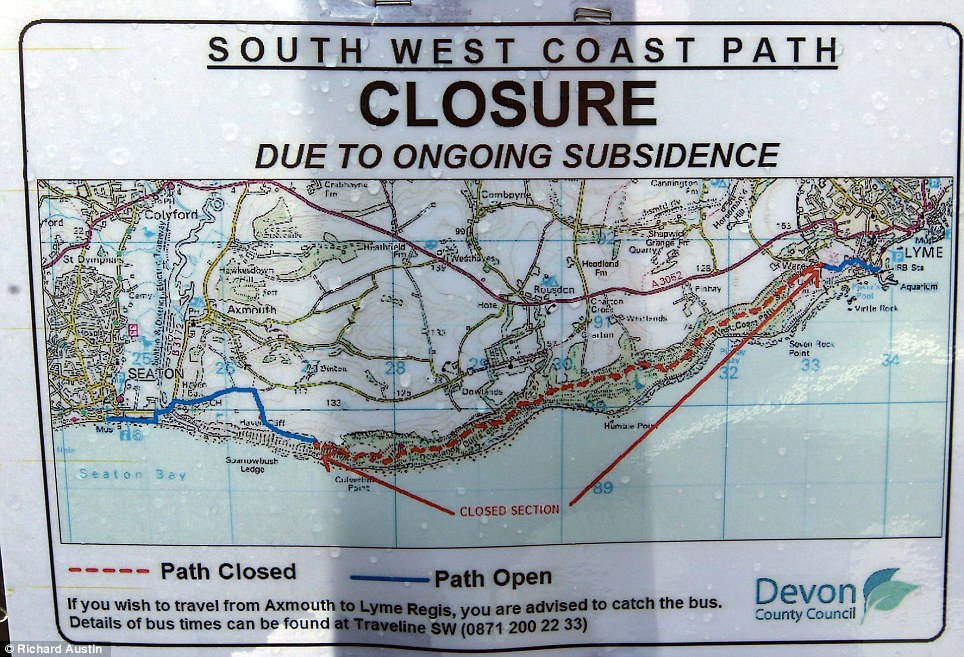
'The amazing thing is that this is all happening in one human lifetime,' said Mr Edmonds, explaining that in geological terms this was lightning fast.
'For example, there used to be a road leading to Charmouth around Black Ven but in the 1920s it disappeared. In 1959 that area saw the largest coastal landslide ever seen in this country.'
It could now be that the western edge of Lyme Regis could also find itself in the geographical record books.
If the cracks and fissures continue to open up, it might soon be the largest chunk of the UK to disappear since its neighbouring landscape vanished 55 years ago.
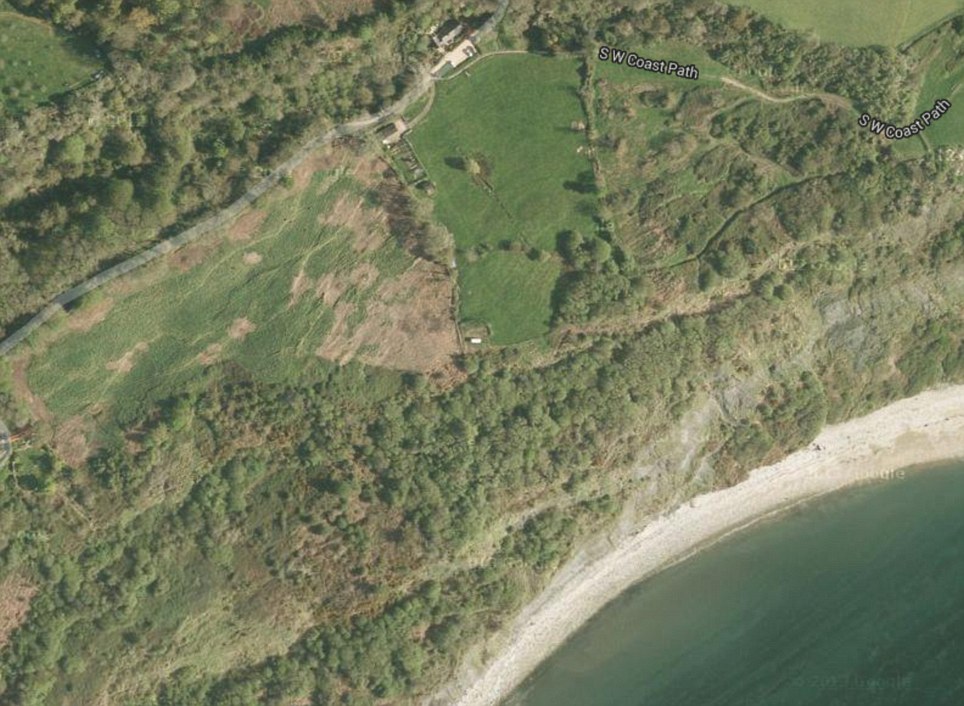



Reader Comments
to our Newsletter